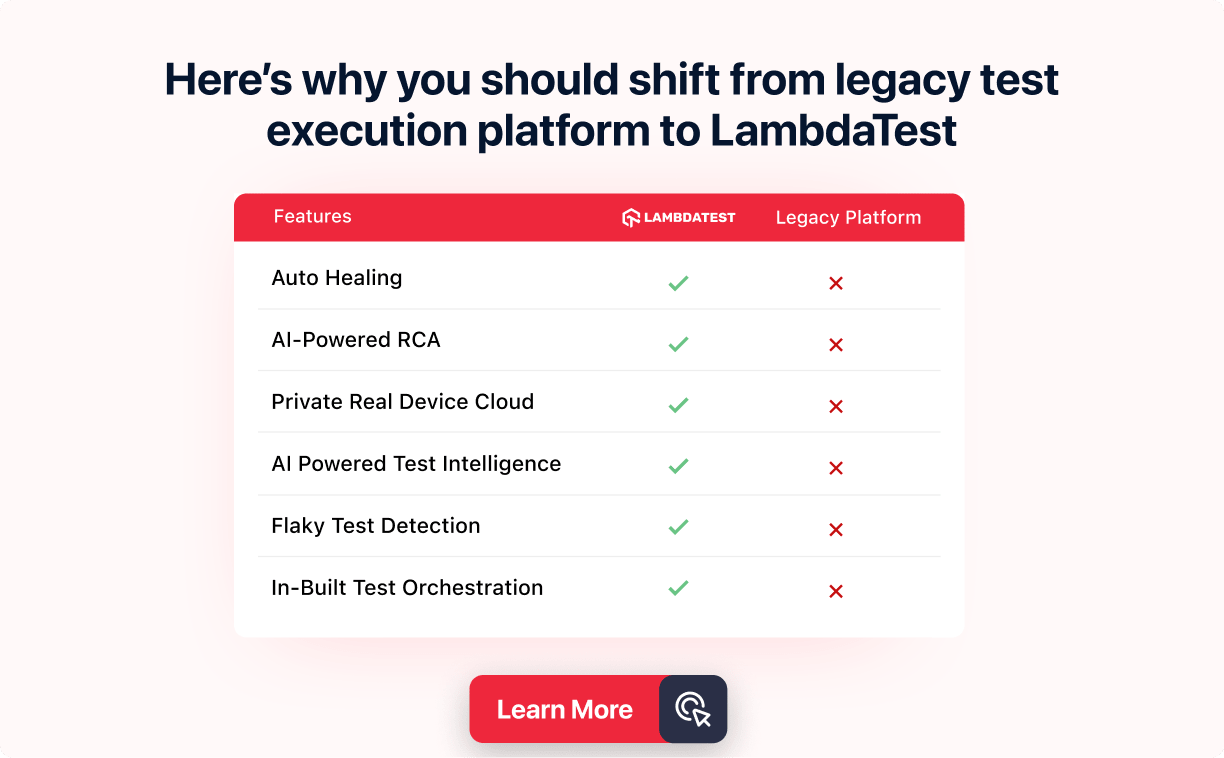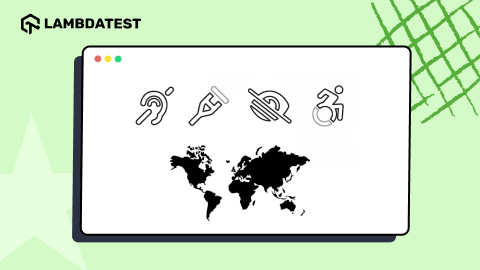Leveraging Test Intelligence to Scale Quality and Drive Competitive Advantage
Antoine Craske
Posted On: November 7, 2024
![]() 62702 Views
62702 Views
![]() 6 Min Read
6 Min Read
Data intelligence is at the core of businesses’ strategic advantages. From customer intimacy to product offerings, data properly captured and transformed enable companies to be a step forward in face of their competitors.
When we talk about test intelligence, it enables us to deliver a similar competitive advantage. This capability provides a comprehensive understanding of digital product quality based on data-driven insights and analytics applied to test automation data.
Companies that made the right investments in the past can quickly develop test intelligence for improved decision-making on what to invest to deliver more value with enhanced product quality, reduced risks, and optimized resource allocation.
The Building Blocks of Test Intelligence
Test intelligence is a capability relying on data analytics to transform raw data into actionable insights. Data sources reside where actual test activities are performed: test management, test automation, and to a certain extent observability solutions.
Three data pillars fuel test intelligence:
- Test automation: The foundation for collecting data at scale
- Test metrics: Key performance indicators to measure test effectiveness
- Test reporting: Clear and concise communication of test results.
Test automation is a core foundation spanning from test management, to actual test execution for the different typologies and environments. It includes the scope of CI/CD for collecting valuable data on the software pipeline stability and quality gates.
Enhance your test insights effortlessly with LambdaTest Test Intelligence—streamlining data into decisions for optimized quality.
Challenges in Adopting Test Intelligence
Test intelligence starts when the data foundations have been set. Even if small results can be achieved at a local level, they usually fall short in providing broader and sustainable value to the organization.
Leaders have first to recognize the challenges of test intelligence. Existing companies have rarely been structured for developing test intelligence as this requires coordination and alignment by design in different parts of the organization.
Existing structures suffers from the following challenges:
- Organizational silos with different vocabulary, practices and solutions
- Data quality and management to ensure data accuracy and accessibility
- Skill gaps to have the necessary expertise available for collecting data.
The cultural shift required to embrace a data-driven mindset is also hindering organizations from moving forward with test intelligence. Leaders have to explicit the value for the business, the steps to be taken, and the architecture to achieve that vision.
- Map the functional and application landscape
- Ensure tools and infrastructures for data collection
- Identify and consolidate data points across systems
- Normalize data to progressively build test intelligence.
This process requires equally investing in the organizational layers. Leaders have to align the management, organizational structure, and skills to develop true test intelligence capabilities through iterations.
Aligning the Organization for Test Intelligence
The organizational structure has to clarify the responsibilities for each layer of test intelligence: data collection, data normalization, and test intelligence analytics. At least one person has to ensure the global alignment of the parts for consistency.
Concrete changes also have to happen. Management priorities and incentives have to incorporate test intelligence requirements. The software has to comply with data collection and quality requirements to develop test intelligence in the organization.
The organization has to mature for embedding test intelligence in its core processes.
That can start by adding test intelligence decisions within the planning and retrospective stages, or by embedding decisions into the CI/CD pipeline to automate quality gates on non-functional requirements.
With the rise of AI in testing, its crucial to stay competitive by upskilling or polishing your skillsets. The KaneAI Certification proves your hands-on AI testing skills and positions you as a future-ready, high-value QA professional.
Leaders have the responsibility to architect and align that ecosystem to leverage test intelligence in their organization. Their first transformation milestone is to develop continuous cycles of feedback that can accelerate the learning rate of the organization.
Strategies for Scaling Test Intelligence
Organizations have to scale test intelligence to get sufficient value. Intelligence is achieved when a tipping point of data points is collected across the landscape to develop insights that were inaccessible.
But scaling is hard. It requires evolving the architecture and organizational dynamic in multiple teams with different contexts and priorities. A balance is also required to leverage the foundations without too much rigidity to keep local adaptations possible.
Scaling test intelligence requires three levels of processes, architecture, and organization. Here, the challenge for leaders is to incrementally develop standards so that adoption is favored, but sufficiently controlled to contain fragmentation.
In the first level of processes, leaders have to provide shared ways of working through central knowledge to expand practices from an initial core. Technology is used at that stage to develop templates and canned solutions to standard needs.
The second level lies in the development of architecture. The building blocks of the initial architecture need to connect multiple applications and data points through normalized integration, standardized data pivots, and monitoring to ensure data quality.
Finally, in the third level, the organization has to support the scale. The role of leaders is to achieve the right balance between centralization and decentralization evolving from Communities of Practices (CoP) to Center of Excellence (CoE), progressively focusing on the most complex tasks.
That structure becomes responsible for establishing standards, providing training, and overseeing the overall test intelligence progress. Leaders have to ensure a well-defined measurement of value and objectives through metrics, outcomes, and impacts.
Learn more about implementing Test Intelligence in organizations in this article: Maximizing ROI In Automation: Using Test Intelligence To Enable Efficient Testing
Leaders are also the ones responsible for setting the decision-making framework, and clarifying what people can decide locally or what needs to go through the CoE. Unified text execution platforms like LambdaTest support that stage of scaling through shared workflows and intelligence data.
Structure your ecosystem for Test Intelligence
Test intelligence is the building block of broader software delivery automation. It enables organizations to adjust their investments based on fresh and comparable data while being able to add quality automata for more quality, speed, and efficiency.
The strategic advantage of test intelligence is the cherry on the cake. Organizational leaders have to develop the transformation plan and system areas enabling to building of test intelligence on the broad test automation data.
Test intelligence will mark a difference between the speed and ease at which organizations can adapt their value proposition. It is the leader’s responsibility to take proactive steps towards building a test intelligence ecosystem.
For instance, LambdaTest Test Intelligence gives teams a smarter way to make testing decisions that truly impact quality and speed. By turning test automation data into actionable insights, it helps organizations boost quality, refine processes, and stay connected to business goals—all with a platform that’s built for Agile teams. Test Intelligence grows with you, offering a simple, scalable approach to test intelligence.
See how Test Intelligence can elevate your testing—try it now!
Got Questions? Drop them on LambdaTest Community. Visit now
















